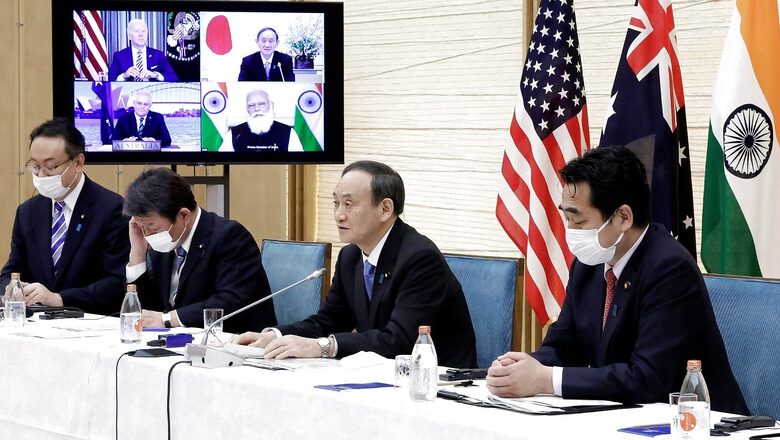
views
US Secretary of State Antony Blinken, on an official visit to India today, said the Quad group – comprising of India, the US, Japan, and Australia – was committed to working on issues important to people’s lives.
Amid China’s increasing assertiveness in the Indo-Pacific region, the recent ‘revival’ of the grouping has attracted global interest and is being seen as a push towards a more multipolar world. As the grouping gains renewed traction with Blinken’s commitment to further coordination between the countries, here is all you need to know about it:
What is Quad?
The Quad, formally known as the “Quadrilateral Security Dialogue,” is a strategic forum for exchanging strategic intelligence and conducting joint military exercises between the four countries. Quad meetings had only been held on a semi-regular basis at the level of foreign ministers earlier, until the March 12 meeting that was held this year.
Officially, the organisation was conceived as a place for cooperation in the Indo-Pacific area to protect shared security and other interests. Observers, on the other hand, believe the Quad is designed to challenge China’s recent military and economic development. As a result, China views the Quad as an attempt to limit its ambitions, and sees the organisation as a future “Asian NATO.”
While the programme was first proposed in 2007-08, it has only recently gained traction.
‘Exercise Malabar,’ an annual military drill between the two countries, is held every year. Only the 2007 and 2020 editions, however, included participation from all four countries. Only India, the United States, and Japan participated in the naval exercise between 2014 and 2019.
March 12 Summit
The summit on March 12 gave all four members the chance to share their perspectives on current issues such as emerging and essential technologies, maritime security, and climate change.
“The Quad grouping was essentially established … to showcase what democracies can deliver together for both our populations and also the broader international public,” Edward Price, spokesperson of the US Department of State had said earlier.
After the meeting, the nations’ joint statement said: “Together, we commit to promoting a free, open rules-based order, rooted in international law to advance security and prosperity and counter threats to both in the Indo-Pacific and beyond. We support the rule of law, freedom of navigation and overflight, peaceful resolution of disputes, democratic values, and territorial integrity.”
Context and timing
The meeting on March 12 took place at a time when Chinese-Australian ties reached new lows, following Australia’s demand for an independent investigation into the origins of the coronavirus outbreak.
India and China have been locked in a massive military standoff along the Line of Actual Control in eastern Ladakh (LAC). The festering tensions culminated in a violent clash between Indian and Chinese soldiers in the Galwan Valley in June last year, killing 20 Indian soldiers. The Chinese People’s Liberation Army (PLA) also lost at least four people during the fight, according to Beijing earlier this year.
For decades, Japan and China have been locked in a significant territorial dispute over Pacific islands and waterways. China’s repeated incursions into the territorial waters surrounding the Senkaku Islands in the East China Sea, which Japan administers but claims, have been a major source of anxiety for Tokyo.
Read all the Latest News, Breaking News and Coronavirus News here.




















Comments
0 comment